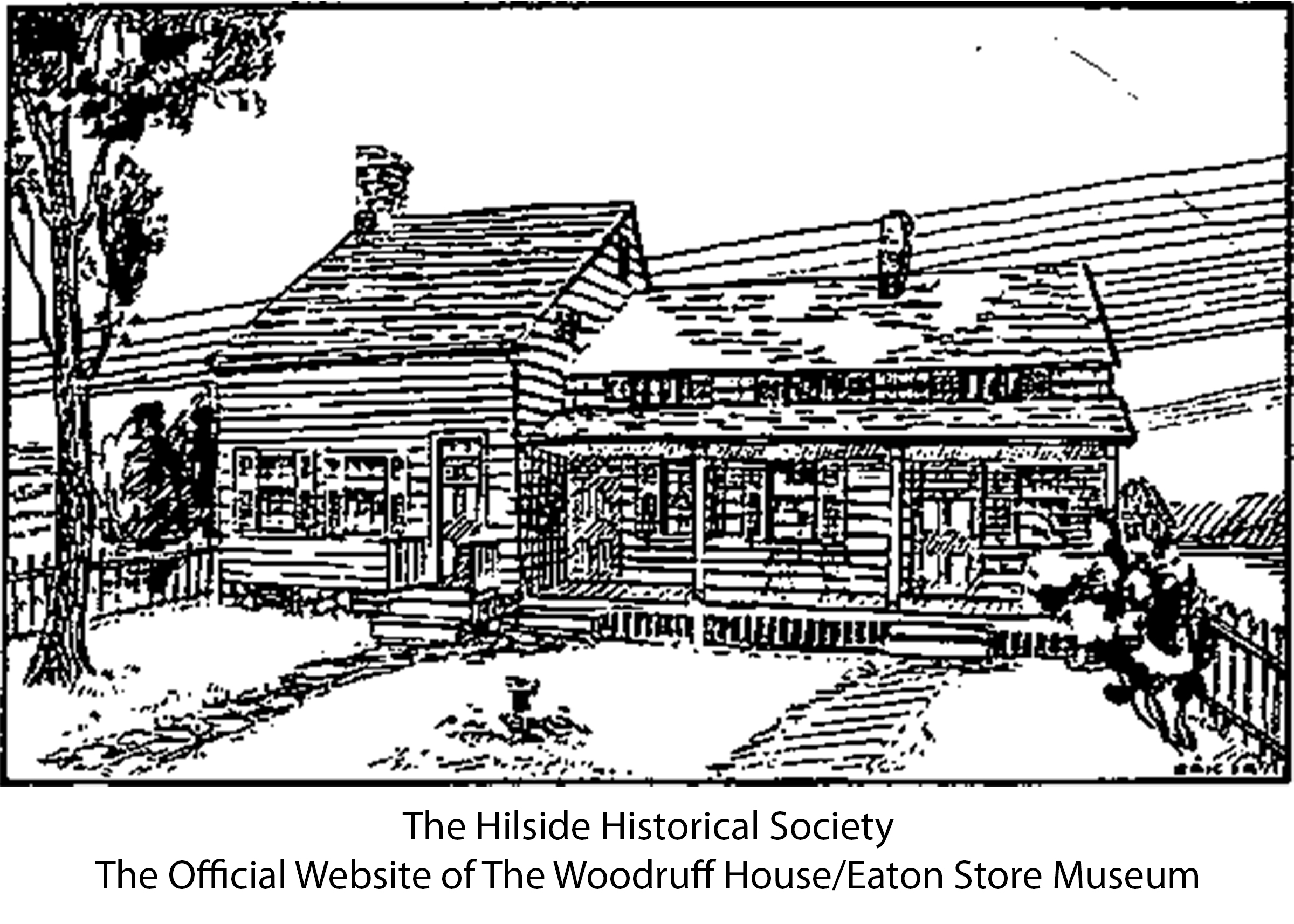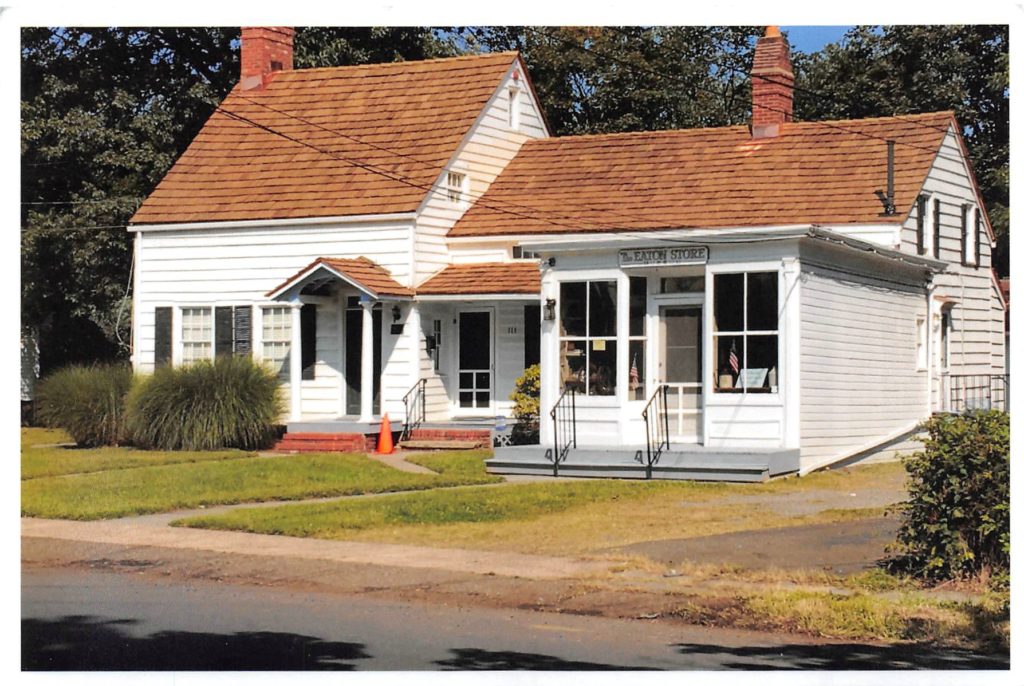The Hillside Historical Society recently replaced the old worn out handsplit red cedar shakes on the Woodruff House and flat roof on the Eaton Store. The Woodruff House/Eaton Store is listed on the National & State Register of Historic Buildings and is located at 111 Conant Street Hillside, New Jersey. The Hillside Historical Society was founded by a group of dedicated local area residents interested in preserving the structure and unique history. The society was chartered by New Jersey in 1978, as a non profit educational organization.
The story of the Western Red Cedar Shake – When adventurous mariners of many nations first explored the Northwest Coast of America in the Eighteenth Century they found coastal natives living in wooden “long-houses,” traveling the inland waters in beautiful wooden dug-out canoes, eating from wooden platters and bowls, carving wooden “totem poles” to record their mythology, cradling new-born babies in wood-and-bark back-packs, and burying the dead in boxes of hewn wood.
The all-purpose wood used by those aborigines-quite literally from cradle to the grave-came from massive trees of diameters up to twenty feet, which often towered two hundred feet above ground, and lived to an age of 700 or 800 years. Hence, the tree was called Western Red Cedar, or Arborvitae. Botanists gave it the scientific name Thuja plicata.
These forest giants were highly respected by the natives, who endowed them with living souls. Before cutting a cedar, which was destined to become a hand-hewn “dugout” canoe, a chosen Indian orator delivered a formal address to the tree, assuring the tree’s spirit of a happy and useful future. It would become a sturdy craft which would carry happy tribesmen on fishing and berry-picking expeditions, or possibly out on the open sea to hunt seal and whale.
From centuries of experience, Indian tribesmen, from northern Oregon to southeastern Alaska had learned that cedar was the most durable of Pacific Northwest tree species; that it was lightest in weight; and that it could easily be split and hewn with crude implements of bone or flint. Indian canoes, and the hewed-cedar boards used as siding on long houses, carried remarkedly smooth and regular hand-chipped surfaces.
Yes, the strength and resilience of handsplit cedar roofing boards enabled Indian long-houses to withstand hail, snow and tremendous gales without damage. The siding boards were family property, passing on from generation to generation. Many now are in museums, as sound as when they were hewn from cedar trees a century or more ago!
The attributes of Cedar – Western Red Cedar is normally a fine-grained wood which exudes an aromatic odor, especially when freshly cut. In weight is one of the lightest of the world’s valuable woods. It is characterized by a complete absence of pitch or resin. Its resistance to decay under most conditions results from the presence of natural preservative oil, some of which are phenolic compounds! The natural color varies from blonde to brown, which on exposure to weather usually darkens. Western Red Cedar is highly favored for uses which include contact with moist soil, or long exposure to weather extremes. Fence posts, hop poles, which must resist continuous moisture, fungus and bacterial attacks, are split from portions of cedar trees which are knotty or do not have sufficiently fine grain for shakes. Aside from the protection of natural preservative oils, the multiple grooves in split cedar surfaces act as definite channels to conduct water from the roof. Split cedar shakes absorb little of the run-off, as splitting separates the fibers, leaving wood-cell walls intact.
Cedar Insulates Homes – the cellular structure of Western Red Cedar retards the passage of heat and cold through the wood, each wood cell acting as an insulating or nonconductive agent. A practical
test of cedar’s superior insulating value may be made by placing recording thermometers in the attics of homes roofed with cedar shakes, and of the homes in the same vicinity roofed with metal, asphalt, slate or the so called “asbestos-cement” shingles. This simple test will show the most striking contrasts under extremes in outdoor temperatures! Weight Factor Favors Cedar – on the basis of dry weight, Western Red Cedar is one the of lightest among commercial roofs. A roof of handsplit cedar shakes, having considerably less weight than any other roofing materials, will allow lighter understructure, with consequent saving in building costs! Shakes Add Roof Strength – Red Cedar shakes, when applied to roofs, add considerably to the strength of the structure, due to their length and rigidity. Shakes actually become structural members of the building due to interlacing and overlapping of the individual shakes. This literally, accomplishes a “bridging” effect. With of exception of sawn shingles, other common roofing materials do not add structural strength, but impose inert load on the structure. This strength and rigidity also renders a shake roof resistant to damage by hail or high winds which may entirely destroy roofs of flexible or brittle materials.
Handsplit shakes are truly “Early American” – “Shakes,” or handsplit shingles, have been used in North America from colonial days up to the present! Colonists on the Atlantic Coast split them from native white pine and other timber species, often smoothing the split surfaces on a “shaving-horse” with a drawn-shave. As our country expanded westward, the migrating people carried the art of shake- making to the Pacific Coast. In the Pacific Northwest forests, they found the world’s finest shake timber – Western Red Cedar.


